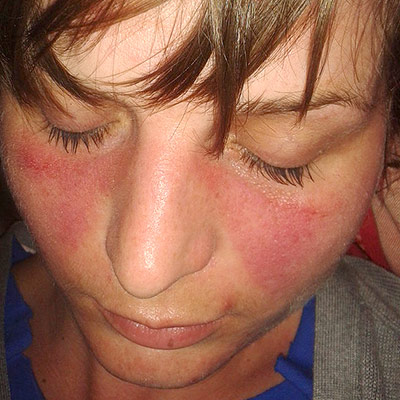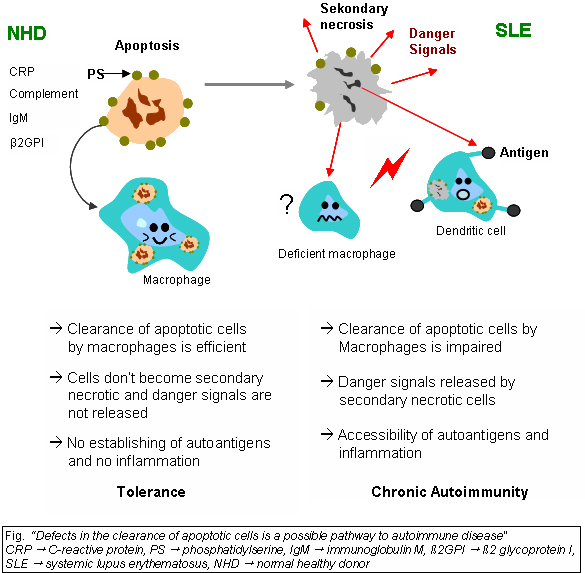Systemic lupus erythematosus
Enlarge text Shrink text- Work cat.: Systemic lupus erythematosus, 1988.
- MESH(Lupus erythematosus, Systemic, entry terms: Libman-Sacks Disease, Lupus Erythematosus Disseminatus)
- Am. heritage dict.(lupus: 1) systemic lupus erythematosus; 2) any of various chronic skin conditions)
- Hennepin(Lupus erythematosus, Systemic)
Lupus, formally called systemic lupus erythematosus (SLE), is an autoimmune disease in which the body's immune system mistakenly attacks healthy tissue in many parts of the body. Symptoms vary among people and may be mild to severe. Common symptoms include painful and swollen joints, fever, chest pain, hair loss, mouth ulcers, swollen lymph nodes, feeling tired, and a red rash which is most commonly on the face. Often there are periods of illness, called flares, and periods of remission during which there are few symptoms. Children up to 18 years old develop a more severe form of SLE termed childhood-onset systemic lupus erythematosus. The cause of SLE is not clear. It is thought to involve a combination of genetics and environmental factors. Among identical twins, if one is affected there is a 24% chance the other one will also develop the disease. Female sex hormones, sunlight, smoking, vitamin D deficiency, and certain infections are also believed to increase a person's risk. The mechanism involves an immune response by autoantibodies against a person's own tissues. These are most commonly anti-nuclear antibodies and they result in inflammation. Diagnosis can be difficult and is based on a combination of symptoms and laboratory tests. There are a number of other kinds of lupus erythematosus including discoid lupus erythematosus, neonatal lupus, and subacute cutaneous lupus erythematosus. There is no cure for SLE, but there are experimental and symptomatic treatments. Treatments may include NSAIDs, corticosteroids, immunosuppressants, hydroxychloroquine, and methotrexate. Although corticosteroids are rapidly effective, long-term use results in side effects. Alternative medicine has not been shown to affect the disease. Men have higher mortality. SLE significantly increases the risk of cardiovascular disease, with this being the most common cause of death. While women with lupus have higher risk pregnancies, most are successful. Rate of SLE varies between countries from 20 to 70 per 100,000. Women of childbearing age are affected about nine times more often than men. While it most commonly begins between the ages of 15 and 45, a wide range of ages can be affected. Those of African, Caribbean, and Chinese descent are at higher risk than those of European descent. Rates of disease in the developing world are unclear. Lupus is Latin for 'wolf': the disease was so-named in the 13th century as the rash was thought to appear like a wolf's bite.
Read more on Wikipedia >
 Topic
Topic











